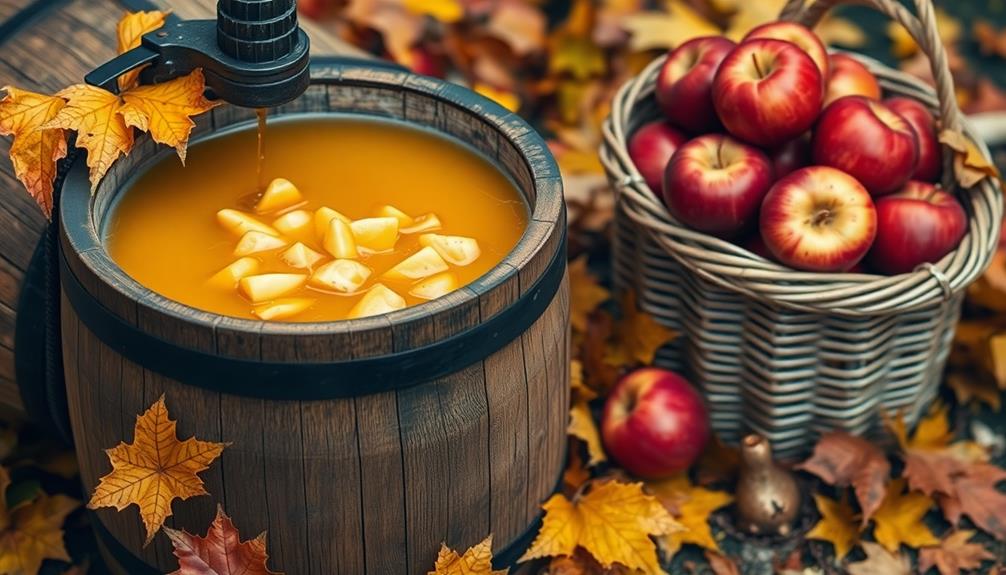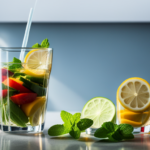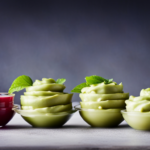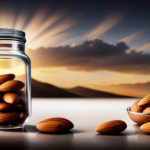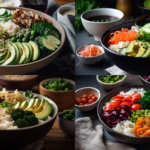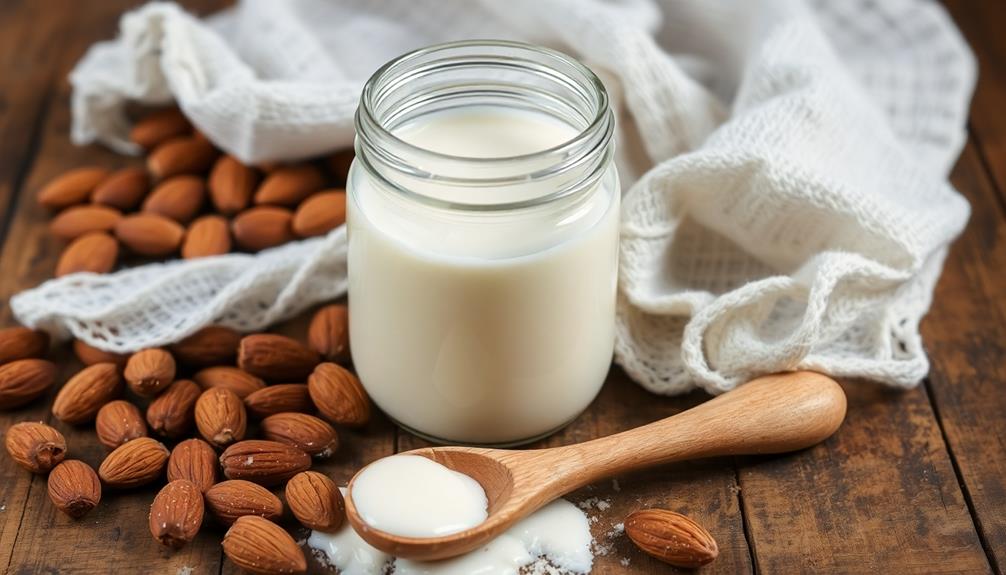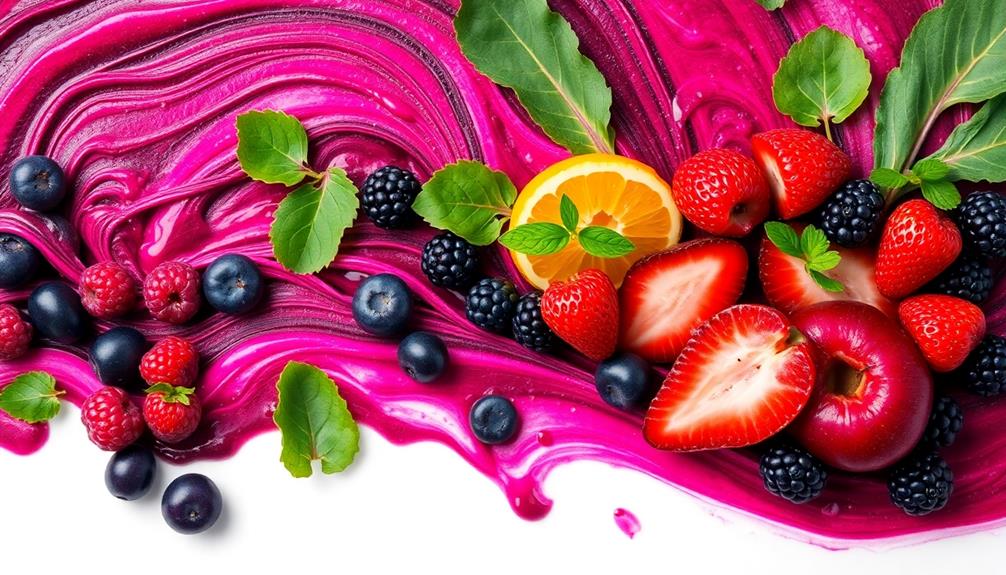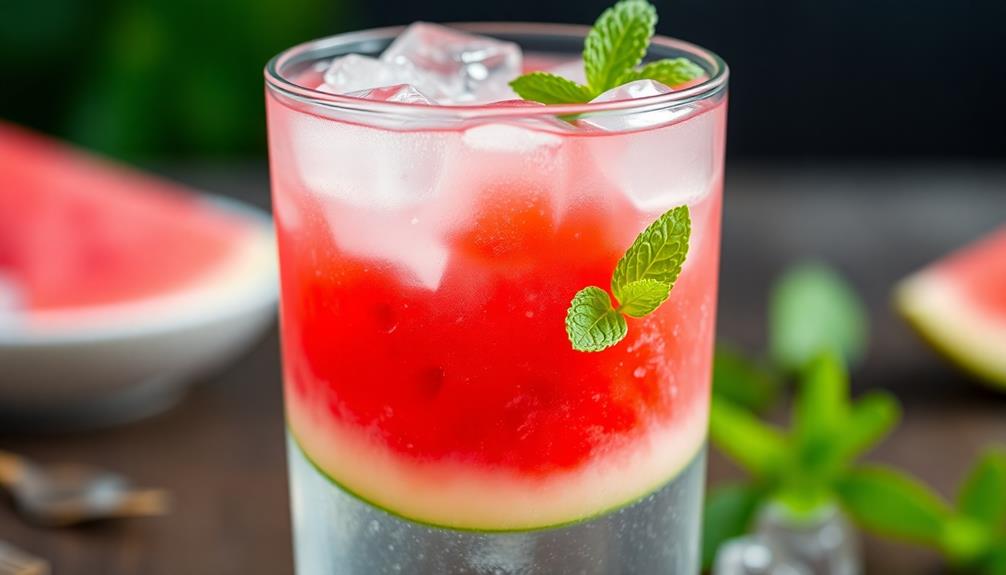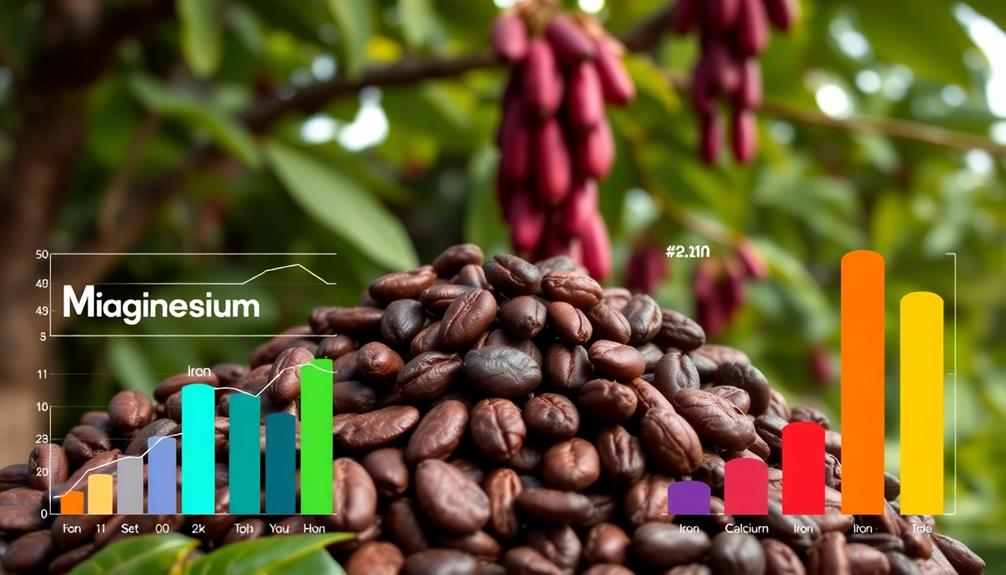You'll love the rich history and incredible health benefits of raw apple cider! This unfiltered, unpasteurized drink dates back centuries, providing hydration and essential nutrients to early North American settlers. Today, artisanal cider-makers continue the tradition, crafting small-batch ciders that range from light and crisp to complex and flavorful. What makes raw cider so special? It retains the enzymes, vitamins, and minerals found in fresh apples, boosting your immune system and aiding digestion. Plus, it's free from added sugars and preservatives. Discover more about the simple yet satisfying process of making raw cider at home.
Key Takeaways
- Raw apple cider has a long history as a staple beverage for early North American settlers, providing hydration and essential nutrients.
- Raw cider retains natural enzymes, vitamins, and minerals due to non-pasteurization, offering health benefits like boosting the immune system and aiding digestion.
- The production process involves pressing fresh, ripe apples to extract pure, unfiltered juice without artificial additives, ensuring a genuine apple flavor.
- The fermentation process transforms natural sugars into alcohol, creating carbonation, while the aging and clarification process enhances the cider's flavor and clarity.
- Raw apple cider can be enjoyed year-round in various forms, from chilled drinks to mulled cider, and it offers a refreshing alternative to sugary beverages.
History
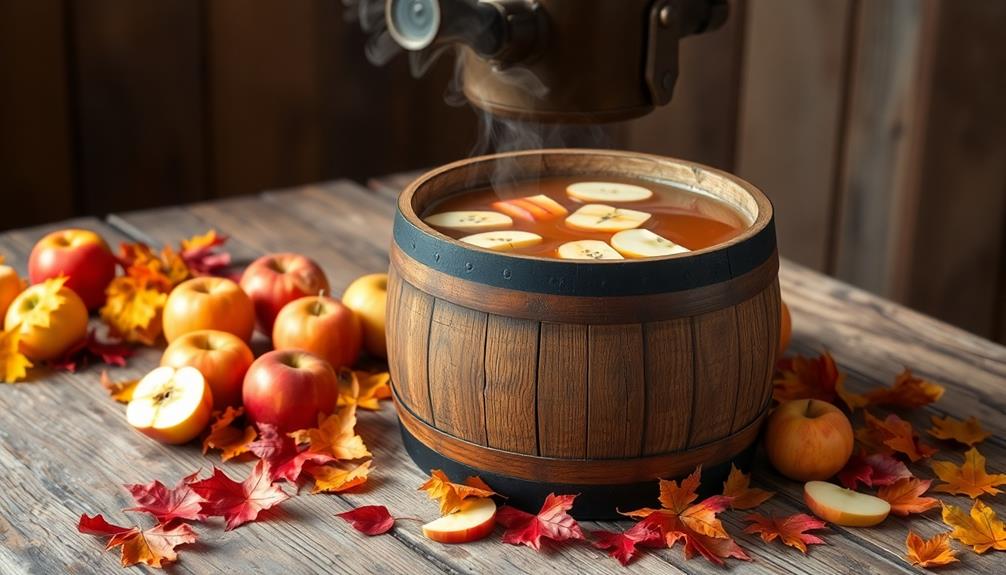
The origins of raw apple cider can be traced back centuries, as early settlers in North America recognized the versatility and health benefits of this natural beverage. Extracted from the juicy flesh of fresh apples, raw cider was a staple drink for many families, quenching thirst and providing essential nutrients.
Similar to the ancient use of chia seeds, raw apple cider played a key role in the diets of early civilizations, providing essential hydration and nutrition.
Over time, the art of cider-making evolved, with folks experimenting with different apple varieties and fermentation techniques. The resulting cider could range from light and crisp to rich and complex, catering to diverse palates.
Interestingly, some ciders even contained a subtle fizz, adding a delightful sparkle to the experience.
As the years passed, raw apple cider remained a beloved tradition, passed down through generations. Today, artisanal cider-makers continue to honor this timeless heritage, crafting small-batch ciders that celebrate the natural flavors of the apple.
Whether enjoyed on its own or incorporated into creative recipes, raw cider continues to delight and inspire cider enthusiasts everywhere.
Recipe
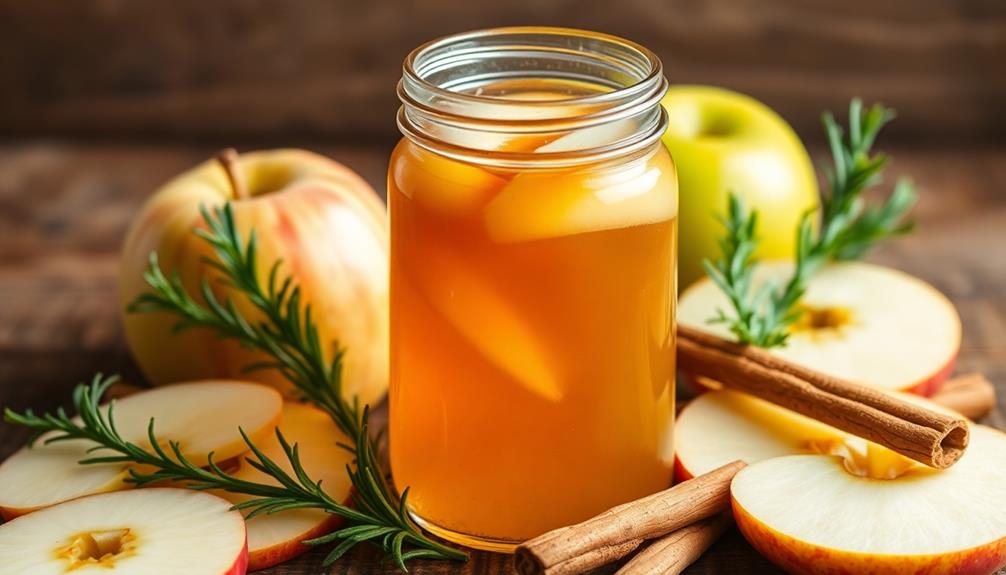
Raw apple cider is a refreshing and healthy beverage made by pressing fresh apples. Unlike pasteurized apple cider, raw cider retains its natural enzymes, vitamins, and minerals, providing a variety of health benefits. From boosting the immune system to aiding digestion, raw apple cider is a versatile drink that can be enjoyed year-round. Incorporating herbs like adaptogenic herbs alongside raw apple cider may further enhance energy levels and overall wellness.
To make your own raw apple cider, you'll need a juicer or cider press. The process is simple and allows you to control the quality and flavor of the final product.
- 10-12 pounds of fresh, ripe apples (a mix of sweet and tart varieties works best)
- Cheesecloth or a fine-mesh strainer
Begin by thoroughly washing the apples and removing any bruised or damaged areas. Cut the apples into quarters or smaller pieces, depending on the size of your juicer or press. Gradually feed the apple pieces into the machine, pressing or juicing them to extract the cider.
Once all the apples have been processed, strain the cider through a cheesecloth or fine-mesh strainer to remove any pulp or sediment.
For best results, consume the raw apple cider within a few days of making it. The cider can be stored in the refrigerator, but its nutrient content and flavor will diminish over time. Enjoy your homemade raw apple cider as a refreshing and healthy beverage, or use it in various recipes, from baking to cocktails.
Cooking Steps
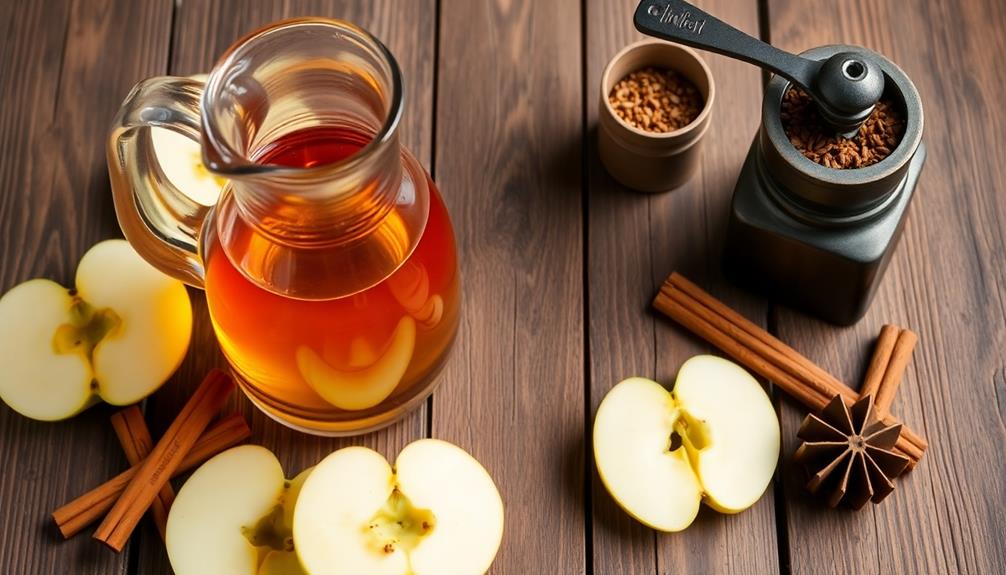
First, you'll need to wash and chop up those crisp, juicy apples, ensuring they're free from any dirt or contaminants. This step is crucial as it aligns with the importance of maintaining a clean kitchen space, which supports a healthier lifestyle by promoting cleanliness and hygiene.
Next, press the apples through a mill to extract the tasty cider. Then, let the cider ferment in an airtight container, allowing the natural sugars to transform into bubbly goodness.
Step 1. Wash and Chop Apples
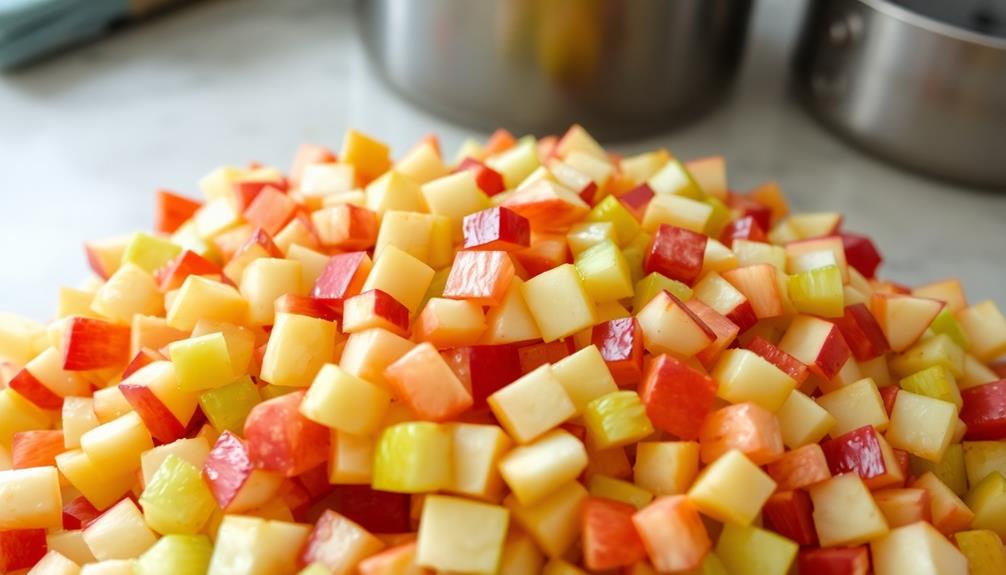
Begin by thoroughly washing the apples under cool, running water. Gently scrub each one with your hands to remove any dirt or debris. This helps ensure your cider will be clean and pure.
Once they're all sparkling, grab a sharp knife and cutting board. Carefully slice each apple in half from top to bottom. Then, slice those halves into thin wedges. Try to make the pieces about the same size so they'll cook evenly.
As you chop, don't forget to remove the core and seeds from each slice. These bits can make your cider taste bitter, so it's best to toss them. Keep slicing until you've gone through all the apples.
Soon, you'll have a big pile of crisp, juicy apple chunks ready to be pressed into delicious, homemade cider. Aren't you excited to see how it turns out?
Step 2. Press Apples Through Mill
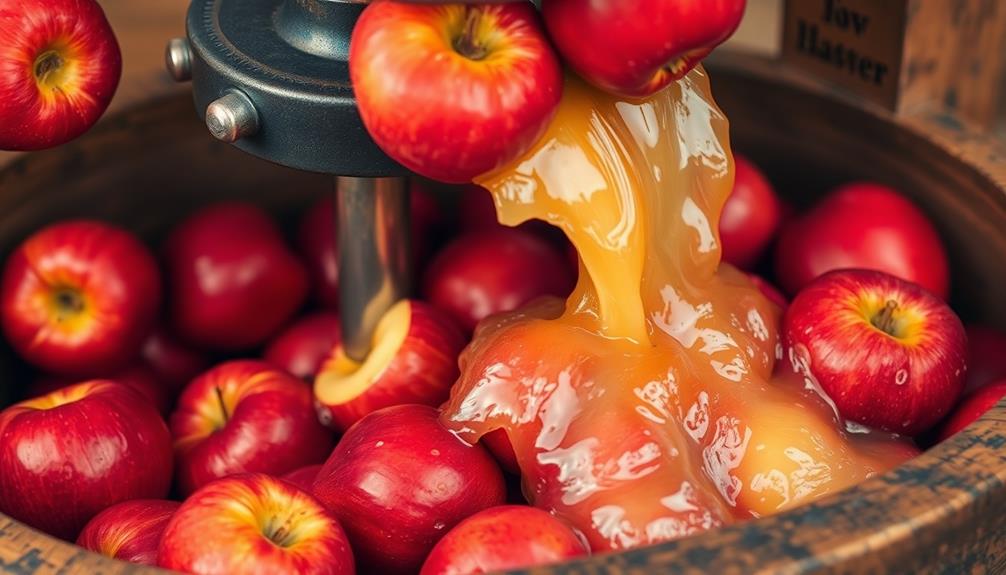
Next, you'll want to press the apple chunks through a mill or grinder. This step is crucial for extracting the maximum amount of juice from your apples.
First, set up your mill or grinder on a sturdy surface. Carefully begin feeding the chopped apples into the hopper, making sure not to overload the machine.
As the apples are ground, the juice and pulp will start flowing out the other end. Be patient and go at a steady pace – you don't want to rush this process and end up with a mess!
Collect the cider as it comes out, using a large bowl or container to catch it all. Once you've pressed all the apples, you'll be left with a wonderful, cloudy liquid – your very own raw apple cider!
The leftover apple pulp can be saved and used for other recipes, like apple butter or cider doughnuts. Now you're one step closer to enjoying a refreshing glass of homemade cider.
Step 3. Ferment Cider in Airtight Container
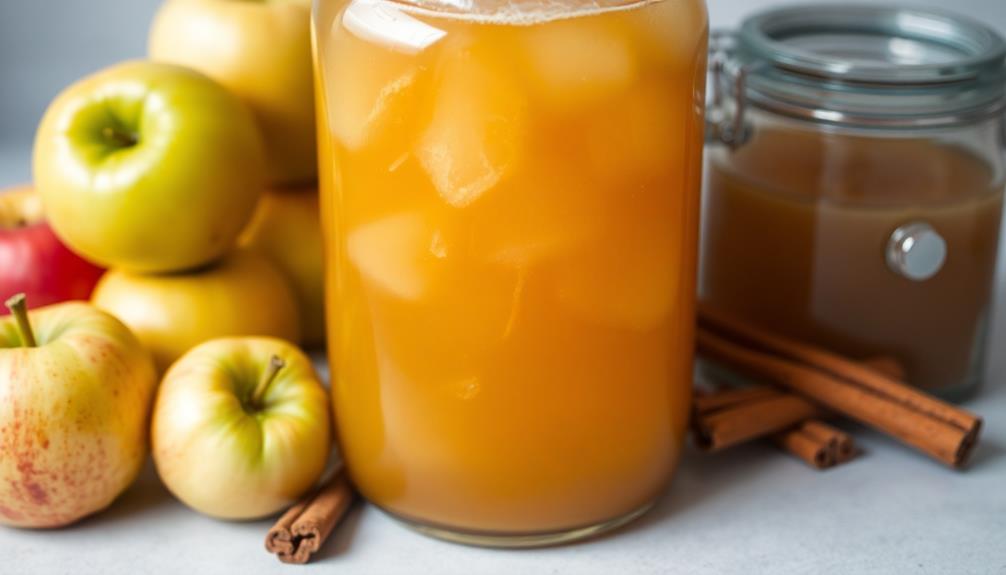
With your freshly pressed raw apple cider, it's time to start the fermentation process. Grab an airtight container, like a clean glass jar or carboy, and pour in your cider. Make sure to leave a few inches of headspace at the top.
Now, add a pinch of yeast – just a little bit will do the trick. This special yeast is what transforms the natural sugars in the cider into alcohol, creating that bubbly, fizzy cider we all love.
Seal up the container tightly and find a cozy spot for it to hang out for the next few weeks. As the yeast works its magic, you'll start to see bubbles forming and hear the occasional "glug-glug" sound. That's a good sign!
Just be patient and let the cider ferment undisturbed. Before you know it, you'll have a batch of delicious, homemade raw apple cider to enjoy. Cheers!
Step 4. Allow Cider to Ferment
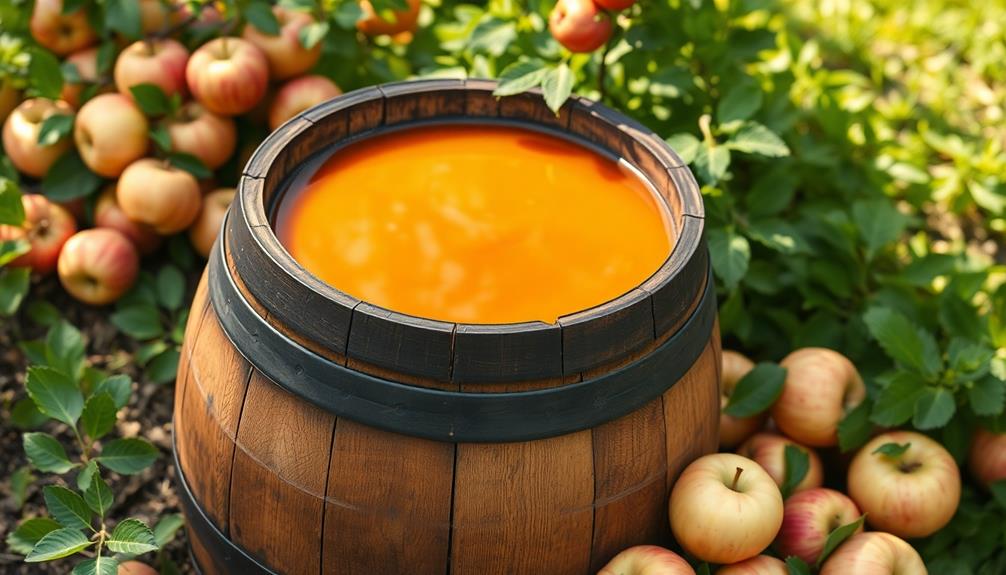
Once you've added the yeast, let the sealed container sit in a cool, dark place for the next 2-4 weeks. This is where the real magic happens! As the yeast works its wonders, it'll start to gobble up the natural sugars in the cider, transforming them into bubbly, alcoholic goodness.
You might even see some foam or bubbles forming on top – that's a good sign!
Keep an eye on the container, but don't open it too often, or you'll let all the precious CO2 escape. Every few days, give it a gentle swirl to keep things mixed up.
After about 2 weeks, you can take a little sample to see how the flavor's developing. It should start tasting nice and tart, with a slightly boozy kick.
Once it's reached the perfect balance of sweet and sour, you're ready to move on to the next step.
Carefully transfer the cider to a new container, leaving the sediment behind. Then, let it sit for another week or two to finish fermenting and clearing up.
Soon, you'll have a batch of delicious, homemade raw apple cider!
Step 5. Rack Cider to Remove Sediment
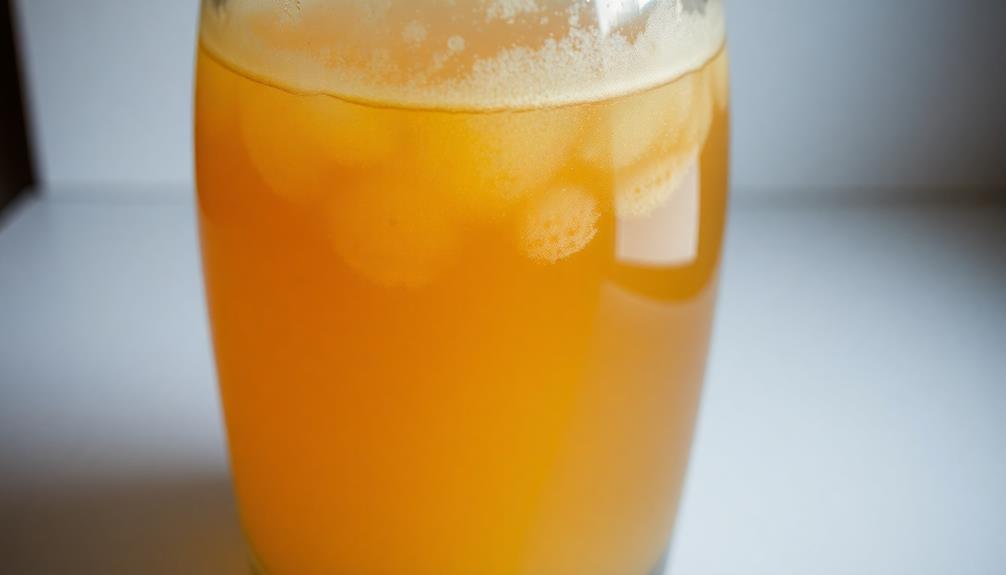
After the cider has finished its initial fermentation and you've sampled the flavor, it's time to transfer it to a new container. This process is called "racking," and it's an important step in creating a clear, well-balanced cider.
Grab a clean, sanitized carboy or other airtight vessel. Carefully siphon the cider from the original fermentation container, leaving the sediment behind. Be gentle to avoid stirring up any of the settled particles.
This sediment, which is made up of dead yeast cells and other debris, can make your cider taste cloudy and unpleasant.
Once the cider is safely in the new container, seal it up and let it continue to age and clarify. Over the next few weeks or months, the cider will slowly clear as the remaining yeast and particles settle to the bottom.
When it reaches the desired level of clarity, you can rack it again or enjoy it as-is. Just remember to handle it carefully to preserve the delicate flavors you've worked so hard to create!
Final Thoughts
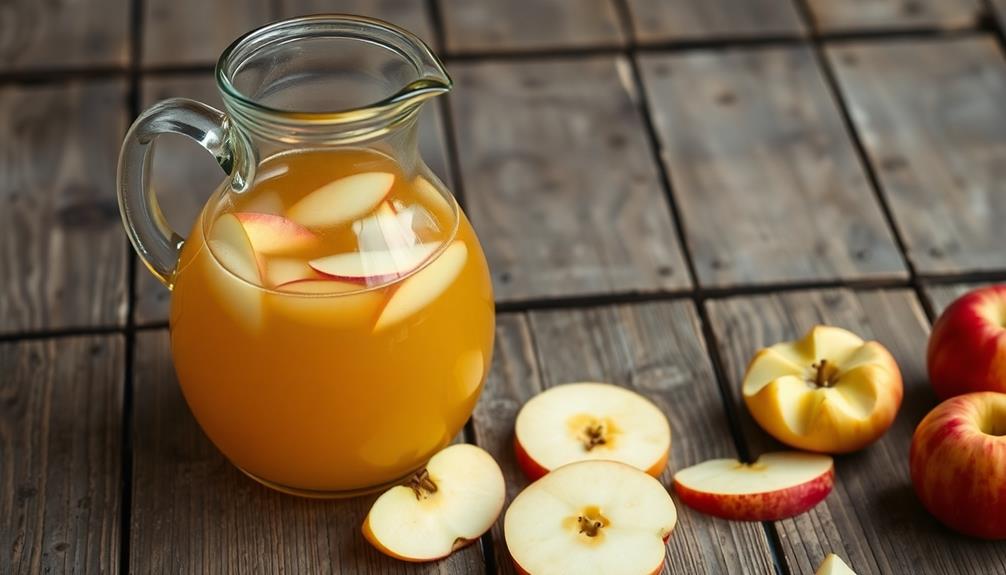
Raw apple cider is a versatile and healthy beverage that can be enjoyed year-round. With its crisp, refreshing flavor and natural sweetness, it's a delightful choice for any occasion.
Whether you like it chilled, mulled with spices, or used in baking, raw apple cider is a true delight.
One of the best things about raw cider is its simplicity. It's made by pressing apples and capturing the pure, unfiltered juice – no added sugars or preservatives.
This means you get all the nutrients and enzymes that make apples so good for you. Plus, the natural cloudiness of raw cider is a sign of its freshness and quality.
Frequently Asked Questions
Is Raw Apple Cider the Same as Apple Juice?
No, raw apple cider is not the same as apple juice. While they're both made from apples, raw cider retains more of the fruit's natural properties compared to the more processed and filtered apple juice.
How Long Does Raw Apple Cider Last in the Fridge?
Raw apple cider typically lasts 7-14 days in the fridge. The exact shelf life depends on factors like pasteurization, storage conditions, and how it's handled. To maximize freshness, keep it sealed and refrigerated, and consume it within that time frame.
Can I Use Raw Apple Cider in Baking?
Yes, you can use raw apple cider in baking. It adds a delightful, tangy flavor to various recipes like cakes, pies, and even savory dishes. You'll enjoy the depth of flavor it brings to your baked goods.
What Are the Health Benefits of Raw Apple Cider?
The health benefits of raw apple cider include providing antioxidants, boosting your immune system, aiding digestion, and potentially lowering your risk of heart disease. It's a great way to support your overall well-being.
Can I Make Raw Apple Cider at Home?
Yes, you can make raw apple cider at home. All you need are fresh apples, a cider press or grinder, and some cheesecloth to strain the juice. It's a simple process that allows you to enjoy the full flavor and health benefits.

